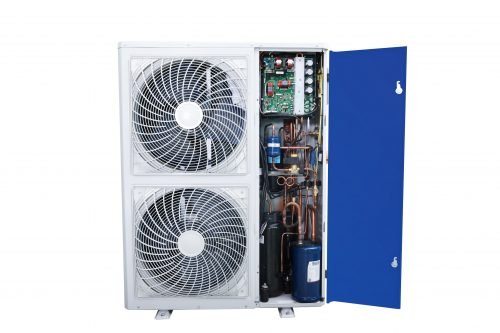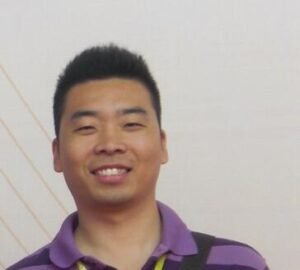一般的に使用される温度は次のとおりです 冷凍ユニット. あなたはそれらを理解し、毎日のメンテナンス中に彼らの違いに注意を払う必要があります.
排出温度
排出温度 (排気温度とも呼ばれます) 冷凍単位は、コンプレッサーを出るときの冷媒の温度を指します. これは、冷凍システムの重要なパラメーターです, 圧縮後の冷媒の熱状態を反映しているため. 排出温度は通常の範囲です 50°C〜120°C (122°F〜248°F).
排出温度が高くなると、などの潜在的な問題を示すことができます:
1. 過熱: コンプレッサーに損傷を与えるか、つながる可能性があります 潤滑剤 劣化.
2. 誤った冷媒レベル: 冷媒が多すぎるか少なすぎるかがシステムの効率に影響を与える可能性があります.
3. 熱交換不良: で非効率的な熱散逸 コンデンサー 排出温度を上げることができます.
4. 吸引超熱: コンプレッサーの入口での過度の過熱は、排出温度が高い場合があります.
コンプレッサーシェル温度
コンプレッサーシェル温度は、動作中のコンプレッサーのケーシングの外面温度を指します. これは、機械的作業と冷媒圧縮の結果としてコンプレッサー内で生成された熱の指標です.
重要な要因が影響します コンプレッサー シェル温度
1. コンプレッサーの負荷: 荷重が多いと、内部摩擦と熱が増加する可能性があります.
2. 周囲温度: 周囲の環境は、コンプレッサーの冷却効率に影響を与える可能性があります.
3. 冷媒機能: 冷媒の種類と状態は、システムの熱特性に影響します.
4. システム効率: 潤滑の不良のような問題, 詰まったフィルター, または、冷却が不十分な場合は、シェル温度を上げることができます.
通常の範囲: シェル温度は設計とシステムによって異なりますが、排出温度よりも低いです. ほとんどのシステムの場合, シェル温度は間の範囲です 40°C〜90°C (104°F〜194°F). メーカーにとどまることが重要です’ コンプレッサーの過熱と潜在的な損傷を避けるための推奨制限.
通常のモニターシェル温度は、冷蔵システムの非効率性または故障の初期兆候を検出するのに役立ちます.
凝縮温度
凝縮温度とは、その温度を指します 冷媒 冷蔵サイクル中のコンデンサーの蒸気から液体状態への変更. これは、特定の圧力の下で発生します, 凝縮圧力として知られています, システムの設計と動作条件によって決定されます.
範囲温度凝縮
空冷コンデンサー
凝縮温度のニーズ 10°C〜15°C (18°F〜27°F) 周囲温度よりも高い.
例えば, 周囲温度が30°Cの場合 (86°F), 凝縮温度はからです 40°C〜45°C (104°F〜113°F).
水冷式コンデンサー
凝縮温度のニーズ 3°C〜8°C (5°F〜15°F) 入口水温よりも高い.
例えば, 冷却水の入口温度が25°Cの場合 (77°F), 凝縮温度はからです 28°C〜33°C (82°F〜91°F).
凝縮温度に関する重要なポイント
1. 熱拒絶との関係: 凝縮温度は、冷媒が周囲の環境に熱を放出するポイントを反映しています (空気または水) コンデンサーで.
2. システム効率: システムの効率を維持するためには、最適な凝縮温度が重要です. 高い凝縮温度は、熱伝達不良または不十分なコンデンサーの性能を示すことができます.
コンデンサーシェル温度
コンデンサーのシェル温度とは、動作中のコンデンサーのケーシングまたは外殻の表面温度を指します. この温度は、凝縮器が冷媒から吸収された熱が周囲の環境にどれほど効果的に消散するかを示しています.
通常、周囲の気温をわずかに上回っています, 約. 2°C〜15°C (4°F〜27°F) より高い.
コンデンサーのシェル温度に関する重要なポイント
1. 熱拒絶指標: シェル温度は、コンデンサー内で発生する熱伝達を反映しています. 冷媒の凝縮温度よりも低くする必要があります.
2. 影響要因:
周囲の条件–周囲の空気や水温が高いほど、空冷式または水冷式システムのシェル温度を上げることができます.
コンデンサーの効率–ダート, ファウリング, または気流が不十分な場合は、非効率的な熱伝達とシェル温度の上昇につながる可能性があります.
冷媒の圧力と荷重–過度のシステム負荷または冷媒圧力は内部熱を増加させる可能性があります, シェル温度に影響します.
受信者温度
受信機の温度とは、に保存されている冷媒の温度を指します 液体レシーバー 冷蔵システムの. 液体レシーバーは、コンデンサーの後にある容器です, 液体冷媒の供給を拡張バルブまたはその他の下流コンポーネントに保存および調整できます.
受信機の温度に関する重要なポイント
1. 凝縮温度との関係
レシーバーの冷媒は飽和または亜冷却された液体状態にあるため、受信機の温度は凝縮温度に近いです.
冷媒が受信機に入る前にサブクーリングが発生した場合、凝縮温度よりも少し低い場合があります.
2. システム操作インジケーター
通常の受信機の温度は、適切なシステム操作を示しています, コンデンサーに十分な熱除去があります.
温度の上昇は、コンデンサーの冷却不足や周囲の条件のような問題を示唆する可能性があります.
3. 温度範囲
空冷システム用, レシーバー温度はです 5°C〜10°C (9°F〜18°F) 凝縮温度以下.
水冷システム用, 冷却効率が向上するため、違いは小さくなる可能性があります.
フィルター温度
フィルター温度は、フィルターを通過するときに冷媒の温度を指します。 フィルタードリエ 冷蔵システムで. フィルタードリエは、水分を除去するために使用されるコンポーネントです, 泥, システムを保護し、効率的な動作を確保するために、冷媒からのその他の汚染物質.
フィルター温度に関する重要なポイント
1. 冷媒状態
フィルターを通る冷媒は、システムの高圧側の液体またはサブ冷却状態にあります.
一部のシステムで, また、低圧側の蒸気冷媒を処理することもできます.
2. 通常の温度範囲
フィルター温度は、冷媒のサブクーリングされた液体温度に近いものでなければなりません.
その 5°C〜10°C (9°F〜18°F) 凝縮温度よりも低い.
3. 異常な温度の適応
フィルター全体の温度低下は、汚れによって引き起こされる部分的な閉塞を示している可能性があります, 氷, または破片.
温度上昇は、システムの非効率性による冷媒の流れの問題または過熱コンポーネントを示唆する可能性があります.
吸引温度
吸引温度 (または入口温度) 冷蔵システムの吸引ラインを介してコンプレッサーに入るときの冷媒の温度を指します. この温度は、システムのパフォーマンスとコンプレッサーの健康のための重要なパラメーターです.
吸引温度に関する重要なポイント
1. 冷媒状態との関係
冷媒は、液体冷媒がコンプレッサーに入ることを保証するために、過熱した蒸気状態にあります, 損傷を引き起こす可能性があります.
2. 通常の温度範囲
吸引温度は、過熱の追加により、蒸発器の温度よりも少し高くなります.
典型的な超熱値の範囲 5°C〜15°C (9°F〜27°F).
3. モニターの重要性
吸引温度が低い: 不十分な過熱を示します, コンプレッサーに入る液体冷媒のリスク ( として知られています “液体スラッギング”).
吸引温度が高い: 過度の過熱を示唆しています, システムの効率を低下させ、コンプレッサーを過熱することができます.
TXV温度
サーモスタット膨張バルブに関連する温度 (TXV) バルブが制御して感覚がある冷媒または周囲の領域の温度を指します. TXVは、冷媒の過熱に基づいて冷媒の流れを蒸発器の過熱に基づいて蒸発器を調節します.
TXVの操作における主要な温度
1. センサー温度
センサー, 蒸発器出口の吸引ラインに取り付けられています, 冷媒温度を測定します.
この温度は過熱を決定し、TXVのオープンまたはクローズを制御して冷媒の流れを調整します.
通常は 5°C〜15°C (9°F〜27°F) 蒸発器の飽和温度の上.
2. TXVインレットの冷媒温度
TXVに入る冷媒温度は、サブクーリングされた液体温度です, これは、凝縮温度よりも少し低いはずです.
一般的 5°C〜10°C (9°F〜18°F) 凝縮温度の下.
3. TXVアウトレットの冷媒温度
TXVを通過した後, 冷媒の温度は、膨張により大幅に低下します, 蒸発器の飽和温度に到達します.
一般的 5°C〜10°C (9°F〜18°F) 凝縮温度の下.
蒸発温度
蒸発温度 (蒸発または飽和温度とも呼ばれます) 冷蔵システムの蒸発器内の冷媒が液体から蒸気に変化する温度を指します.
蒸発温度に関する重要なポイント
1. 冷媒状態との関係
蒸発温度で, 冷媒は環境から熱を吸収し、液体から蒸気に移行します.
2. 蒸発器圧によって決定されます
蒸発温度は、蒸発器内の与えられた圧力の飽和温度に対応します. この関係は、使用される冷媒の種類に依存します.
温度範囲
蒸発温度は通常です 5°C〜10°C (9°F〜18°F) 冷却される培地の目標温度の下 (例えば, 空気または水).
ために 空調 システム, 範囲は 2°C〜10°C (36°F〜50°F).
低温の場合 冷凍システム, それは同じくらい低くなる可能性があります -40°C〜10°C (-40°F〜14°F).
屋外の周囲温度
屋外の周囲温度は、建物の外の温度または冷蔵システムを指します. システムが動作する環境の外部温度です, また、空冷コンデンサーやHVACの屋外ユニットなどの機器の性能において重要な役割を果たしています。 冷凍システム.
屋外の周囲温度に関する重要なポイント
1. コンデンサーの性能への影響
空冷システムで, 屋外の周囲温度は、コンデンサーの効率に直接影響します. 周囲温度が高いほど、凝縮器の熱を拒否する能力を低下させる可能性があります, 排出圧力と温度が高くなります.
2. システムの負荷
屋外温度は、システムの全体的な冷却負荷に影響します. 例えば, 暑い気候で, 冷却需要は高くなっています, のパフォーマンスに影響を与える可能性があります 冷凍 および空調システム.
3. 季節変動
周囲温度は季節とともに変動します, 夏は暖かく、冬は寒い. システムはこれらのバリエーションを効果的に処理する必要があります.
4. 通常の温度範囲
屋外の温度範囲は、地理的な場所と季節によって大きく異なる場合があります, しかし、通常, それは範囲からです -10℃ (14°F) 冬に +40℃ (104°F) または、多くの地域で夏の間は高くなります.
5. システムのサイジングと操作における重要性
エンジニアは、HVACおよび冷凍システムを設計するときに屋外の周囲温度を検討して、高温と低温の両方で効率的に動作できるようにします.
結論
これらの温度は、周囲条件などの要因の影響を受けます, システム設計, 冷媒タイプ,等.
適切な選択とメンテナンスエネルギー効率を最適化するためには、温度が重要です, システムの寿命を確保します, 特定の冷却または凍結要件を満たします.
コメント?
ようこそメッセージを残すか、再投稿してください.














